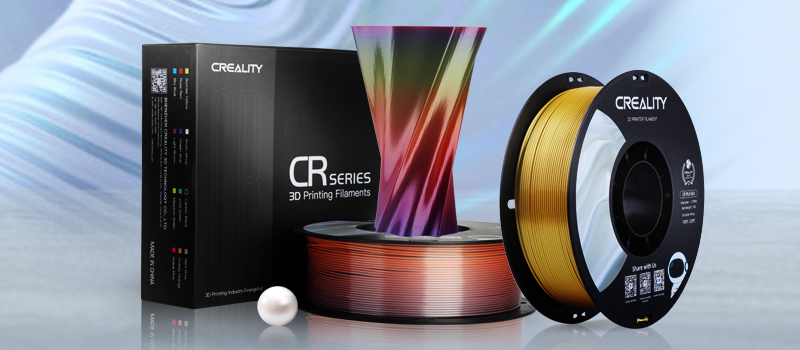The Buying Guide for Creality 3D Printing Materials.
How to choose the right filament for your printing needs?
There are various materials used for 3D printing, it is easy to get lost in the many types and brands when users choose materials. As a leading manufacturer in the 3D printing industry, Creality not only produces printers but also invests a lot of R&D efforts in developing 3D printing materials. Pre-development tests with the printers and filaments to ensure perfect match.
In this article, we will introduce the printing materials available for FDM and LCD 3D printers from Creality, and this buying guide will help you choose the best material or improve the quality of your prints.
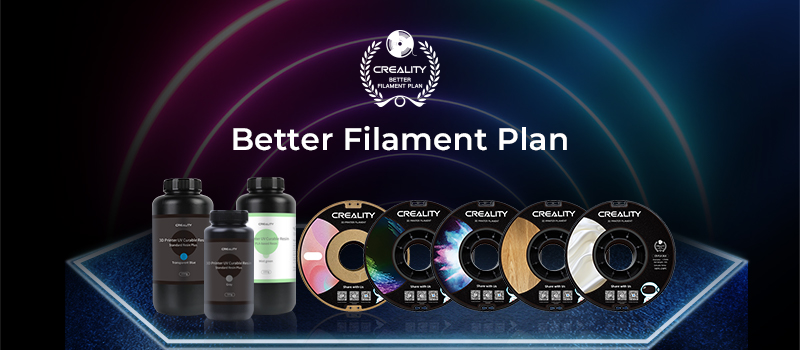
Filament
PLA
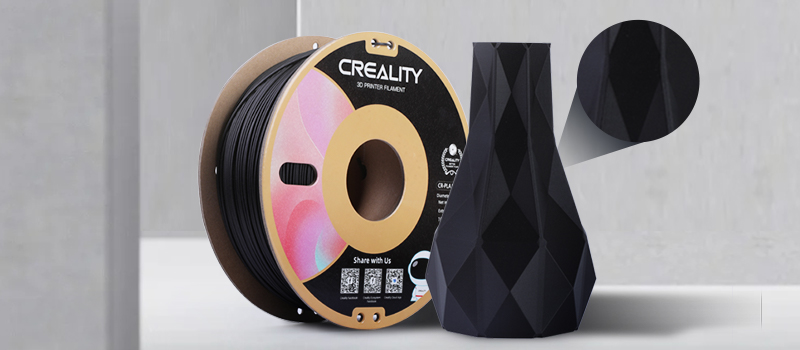
PLA material is known to be one of the most popular materials for FDM printing today. Shop on Amazon>>
First of all, PLA can achieve biodegradation under certain conditions and is a low-carbon and environmentally friendly material. Secondly, PLA is easy to print with a low printing temperature and models are not easy to warp, so in most printing applications, users usually choose PLA for printing.
There is a wide range of PLA filament available from Creality, let's learn more about the characteristics of these different PLA materials.
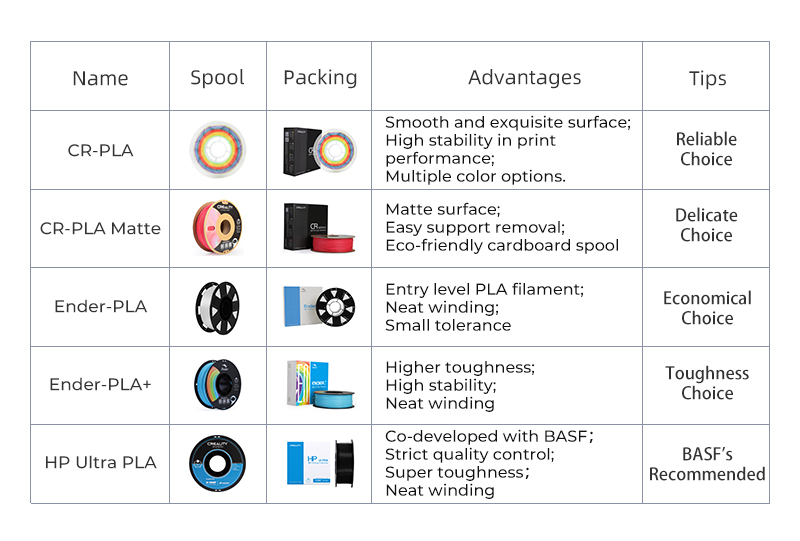
CR-Silk
(Click to learn more)
Silk filaments are developed based on PLA raw material, with the addition of special materials that give the filament a high gloss finish, giving the model a silk-covered feel and appearance. Silk has the easy printability of PLA without warping and the delicate glossy texture of silk,ideal for printing noble decorations, structures and artwork.
PLA Composites

PLA composite materials refer to filaments that add other materials to PLA materials for special printing purposes.
The CR-Wood filament is PLA with white pine fiber and the models printed with CR-Wood filament have a woody effect.
CR-PLA Carbon filament adds tough carbon fiber on the basis of PLA to enhance its stability, making the model lighter and improving the model stiffness.
Please note that composite filaments are made of special materials that increase the wear and tear on the nozzles during the printing process, so when using these filaments you should use nozzles that are abrasion-resistant or high hardness.
CR-PETG
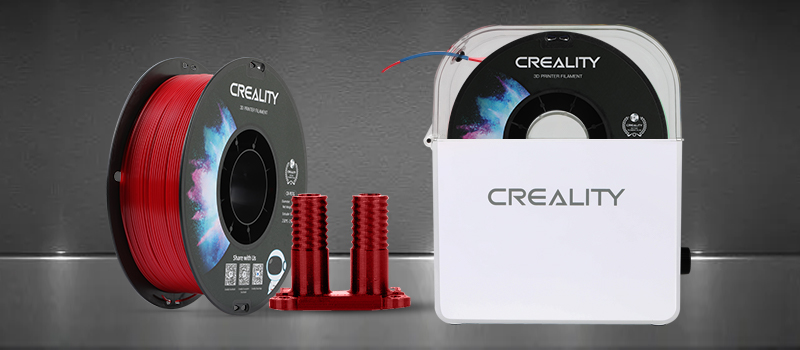
PETG is a relatively easy material to print on, combining the advantages of both PLA and ABS materials.With the strong, temperature-resistant, and durable characteristics of ABS, it also has the easy-to-print reliability of PLA. PETG printed models are weather-resistant and are thus often used for garden appliances.
Although it has good adhesion, PETG is easy to cause model drawing due to moisture absorption. We will recommend using it with a Creality dry box to dry and store PETG.
CR-TPU
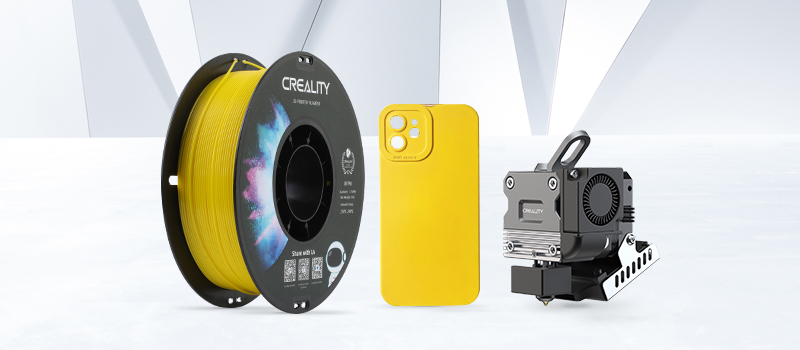
TPU is one of the most common thermoplastic materials used in 3D printing filaments, and its good elasticity and wears resistance are often used in regular and industrial model printing.
Most TPU filaments are required for use with Direct extruders. The reason is that the distance between the drive gear and the hotend should be as short as possible in order to feed the filament into the hotend more efficiently. However, Creality high flexibility HP-TPU can also be printed smoothly using the Bowden extruder. If you own the Ender-3 series printer, we recommend using the Sprite Extruder for better print TPU filaments.
CR-ABS

ABS is the second major filament used in FDM 3D printing and is used in many household items such as Lego bricks, and mechanical parts due to its durability, robustness and temperature resistance.
While it plays a major role in commercial applications such as rapid prototyping, it is easy to cause problems such as model warping during the printing process and is recommended for use in closed printers or used with Enclosures.
Resin
LCD Standard Resin Plus

If you are using LCD, SLA or DLP printers, you need photosensitive resin as the printing material. Standard resins are the most used resins for everyday printing and are ideal for applications such as creating concept models, functional models, miniatures and visual arts.
Creality standard resin has extremely high toughness and strength. The printed model has high hardness and strong toughness with lower odor and is not easily damaged. It is the best choice for your daily printing.
Water Washable Resin Plus
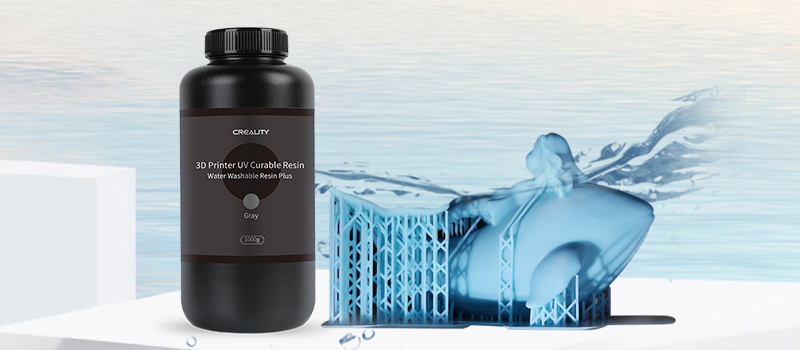
Usually, models printed with resin need to be cleaned with alcohol, but alcohol is a high-risk liquid and is not easy to store, and some areas have restrictions on the amount of alcohol to be purchased. Water washable resin means that instead of cleaning the model with alcohol, it is safer to use water. If you're new to resins, looking for an easier-to-use product, or want to save money on cleaning, water washable resins are a more convenient and cleaner alternative.
PLA-based Resin
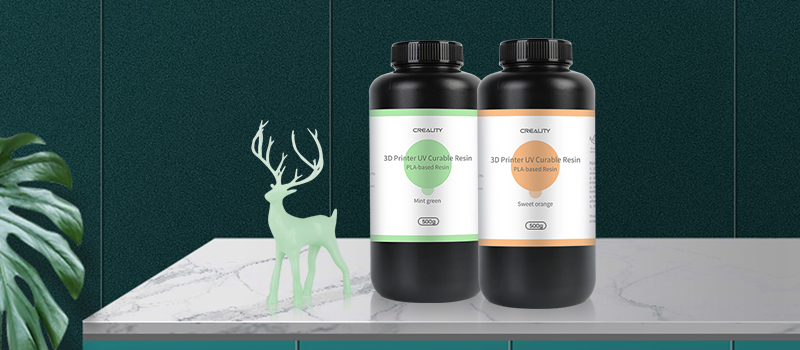
While maintaining the rigid resin printing performance. PLA-based Resin is an environmentally friendly resin synthesized from lactic acid. The raw material is derived from diastatic fermentation, which maintains high precision, good toughness and low shrinkage of the resin, also has good bio-compatibility, low stimulation, being safe and friendly to the humans and the environment.
Dental Resin
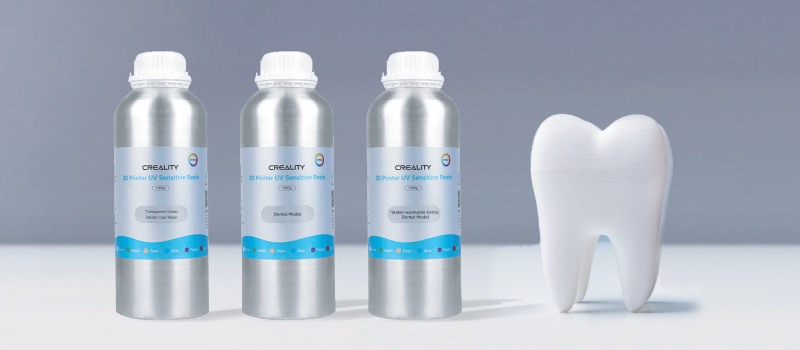
Water washable orthodontic resin is a hot-pressed 3D printing resin for Invisalign with very low shrinkage, the printed tooth models are high accuracy and have clear edges. And models can be clean directly with water, making it safer and more reliable.
Restorative dental resin is used in dental restoration design. The model surface with high hardness, scratch-resistant. Printed models are low shrinkage, high model accuracy. Mainly used for printing removable dental prosthetic models
Creality will launch more quality printing materials to meet more users' printing needs, please stay tuned!
















